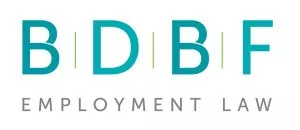In this briefing we round up the Plan B contingency measures to be adopted in the fight against the Omicron variant and assess what the latest "work from home" guidance really means for office-based employers.
What are the Plan B restrictions and when do they come into force?
The Government's Autumn and Winter plan set out the measures needed to manage COVID through the Autumn and Winter months, including contingency measures - a "Plan B" - to be followed in the event of unsustainable pressure on the NHS. On 8 December 2021, the Prime Minister announced that these Plan B measures were to be triggered in the light of the growing number of Omicron variant infections (you can read more about the Omicron variant in our briefing here). The Plan B restrictions are summarised below.
- Face coverings: From Friday, 10 December 2021, face coverings were required by law in some public indoor settings, such as theatres and cinemas, but not in hospitality settings. This was in addition to the existing requirement to wear them in shops, cinemas premises that provide close contact services, transport hubs and on public transport. There is no requirement to wear them in office settings, although the Working Safely during Coronavirus Guidelines for offices, factories and labs (the Guidelines) encourages the use of them in congested areas (e.g. corridors / lifts etc).
- Working from home: from Monday, 13 December 2021, office workers who can work were asked to do so. However, this is guidance only, not law - it will not be unlawful to leave home to attend work. For a full discussion of the latest working from home guidance, please see below.
- Changes to self-isolation rules: new rules introduced in August had exempted certain groups of people (the double vaccinated and others) from the requirement to self-isolate where they had been in contact with a positive case of COVID. However, these rules were changed in response to the Omicron variant, requiring anyone who was a contact of a suspected or confirmed Omicron variant case to self-isolate for ten days, even if they fell into one of the exempt categories. However, from Tuesday, 14 December 2021, the rules changed again. From this date, anyone falling into an exempted group who was a contact of someone with COVID (whether Omicron or otherwise) will not need to self-isolate. Instead, they should take lateral flow tests daily for seven days. You can read more about the new rules here.
- Covid pass: from 6am on Wednesday 15 December, certain businesses and events (nightclubs and large venues) were required by law to check the COVID status of workers and customers using the NHS COVID pass or a negative lateral flow test. This should not affect office-based employers.
Do the Plan B restrictions mean that all office workers must now work at home?
No. The guidance for office-based employers on working from home has evolved subtly throughout the pandemic. Before considering the latest position, it is helpful to reflect on how the position has changed over the last two years.
- Spring - Autumn 2020: At the outset of the pandemic, the advice was that everyone should work from home save where it was not possible to do so. By August 2020, the Guidelines had been softened slightly to allow employers greater discretion to return workers to the office, provided it was possible to do so safely.
- Autumn 2020 - Spring 2021: When the second wave of the pandemic hit in October 2020, the guidance was tightened up to say that those office workers who could "work effectively" from home should do so over the Winter of 2020. However, anyone who could not do so was permitted to attend the office, provided that it was safe to do so. This iteration of the guidance was flexible enough to leave it to the worker to decide what "working effectively" meant for them (within reason).
- Spring - Summer 2021: By Spring 2021, the Guidelines were moderated to provide that workers could return to the office when Step 4 of the unlock roadmap was reached (which eventually took place on 29 July 2021). However, the guidance said that workers could attend the office before Step 4 was reached if they could not work effectively from home, it was appropriate in the light of a worker's mental or physical health difficulties or it was appropriate in the light of a worker's "particularly challenging" home working environment.
- Summer - Winter 2021: All COVID restrictions were lifted on 29 July 2021 and the guidance was updated to allow employers the freedom to return all workers to the office on a gradual basis over the Summer. Most employers did this over the late Summer and Autumn months, although many opted to retain a degree of hybrid working.
The new Guidelines applied from 13 December 2021. They provide that office workers should work from home "if they can". There is no qualification to say that they should do this only where they cannot work "effectively" from home. However, the guidance goes on to say that anyone who cannot work from home may continue to go into work, for example, where they need to access equipment which is necessary for their role, or where their role must be completed in-person. It also states that employers should consider whether home working is appropriate for workers facing mental or physical health challenges, or those with a particularly challenging home environment.
Therefore, the Guidelines are similar to those in place throughout Spring and Summer 2021, save that the absence of the word "effectively", and the emphasis on attending where "necessary" or if they "must", suggests a slightly more restrictive approach. In our view, the end result is that employers should not ask workers to attend the office for non-essential reasons (and nor should workers elect to do so).
However, there remains leeway for workers to attend the office where they face mental or physical health difficulties. For example, if a worker finds that homeworking causes or exacerbates depression or anxiety then they may attend the office. In addition, if the worker has a "particularly challenging" home working environment it may be appropriate for them to attend the office. The Guidelines do not expand on what counts as "particularly challenging", but it is reasonable to conclude that it has to be something more than being bored of working from home or wanting to socialise with colleagues. It is likely to cover things like:
- poor internet access;
- disruption caused by a house move or building works;
- inability to concentrate due to a noisy environment;
- cramped working conditions; and/or
- lack of privacy.
The Guidelines state that where a worker does attend the workplace, they should consider taking regular lateral flow tests to manage the risk.
It's also worth noting that the Guidelines urge caution in relation to people who are at higher risk of infection from COVID and/or an adverse outcome if infected. These groups are not specified but will include those who are considered clinically extremely vulnerable, some disabled workers, pregnant workers and, potentially, any unvaccinated workers. At the same time, employers must take care not to discriminate against a worker because of a protected characteristic.
Next steps?
Office-based employers should now take the following steps:
- consult with workers and decide who needs to come into the workplace and who can work from home (bearing in mind the special needs of "at risk" workers and those with protected characteristics);
- update their health and safety risk assessment in light of Omicron and implement any measures;
- communicate the latest guidance to staff and ensure they understand that they should only attend the office in appropriate circumstances; and
- stay alert to changes to the restrictions - a review of the current position is expected in the early January 2022.
The content of this article is intended to provide a general guide to the subject matter. Specialist advice should be sought about your specific circumstances.

